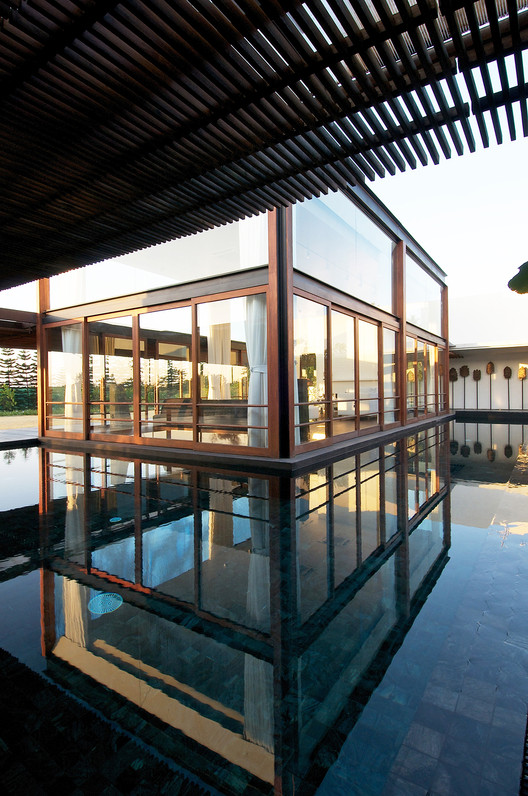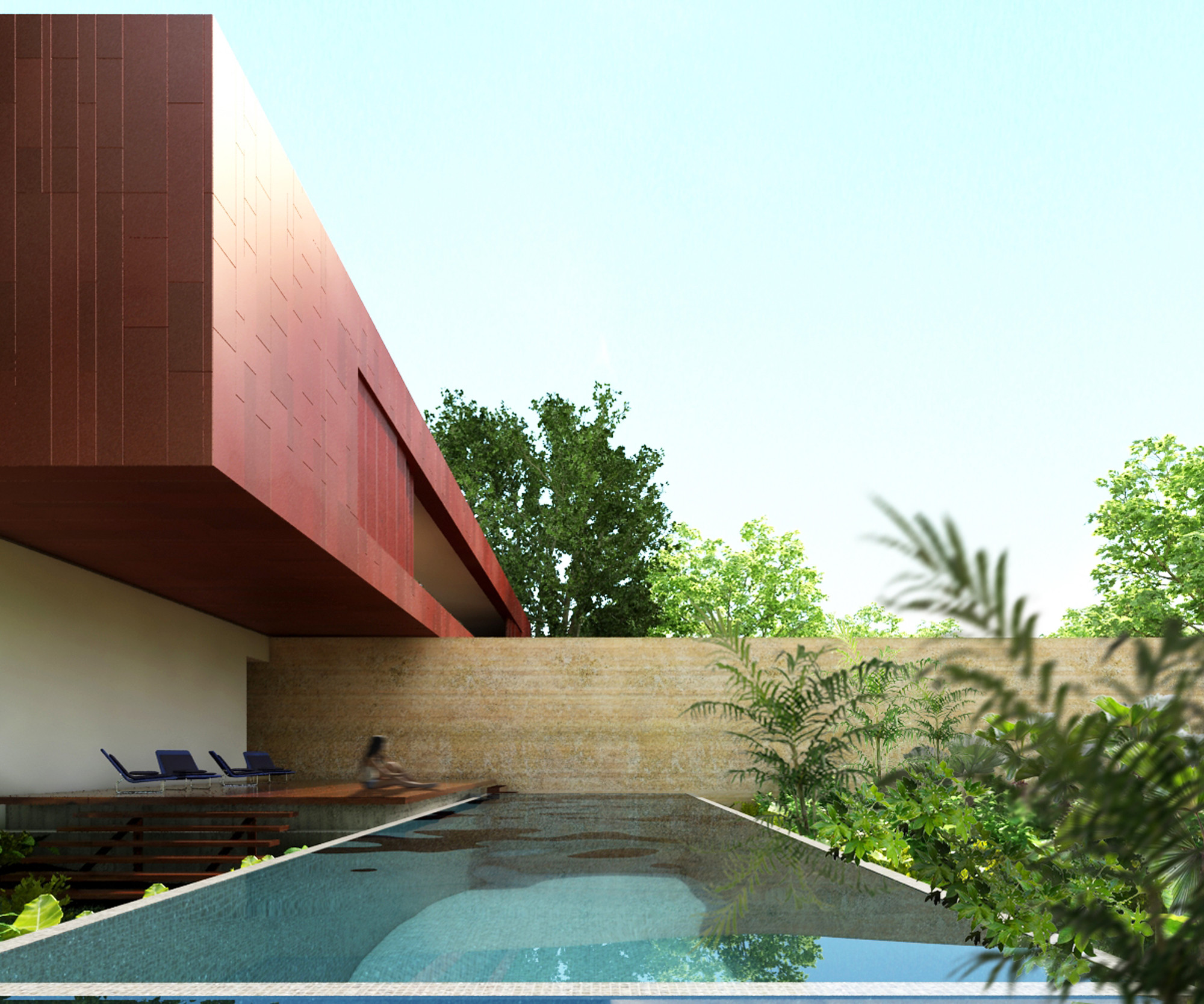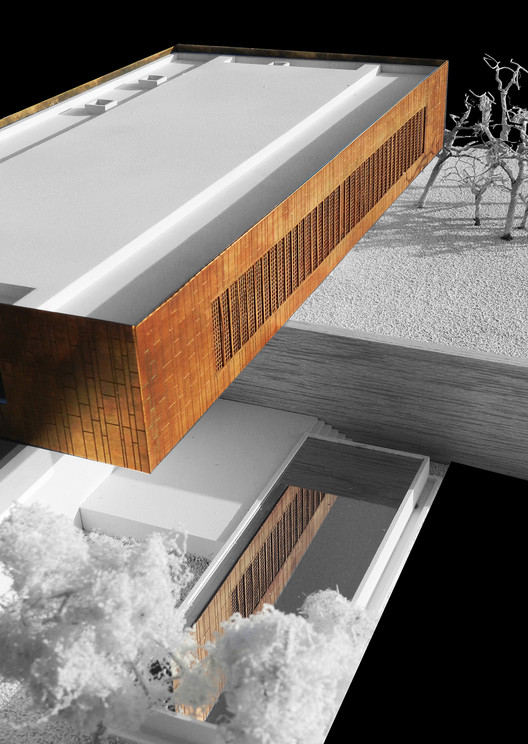
Indian Architect & Builder, through a two-part series titled ‘Practices of Consequence’ (Volumes I and II) delves deeper into contemporary Indian practices that have carved a unique identity and place for themselves in the country today. This article, part of the first volume of the series, takes a closer look at SPASM, a Mumbai-based firm.
An emerging practice, SPASM has a unique and rigorous approach towards architecture. Headed by Sanjeev Panjabi and Sangeeta Merchant, the studio has designed and executed projects of varying scale and character. Experimental in terms of materiality, technical innovations and construction, SPASM’s architecture is imagined in great detail – both technical and experiential. Their work in both India and East Africa is responsive to the context of its locations. Indian Architect & Builder’s interview with the founders, after the break…

IAB: Please describe your firm.
SPASM (Sanjeev Panjabi + Sangeeta Merchant):
SPASM is not a singular architectural practice. We believe in focusing on six key components:
MODUS: Two station points in an architectural perspective render greater depth to an image. Over the last 15 years, we have used each other as station points - evolving and developing individual expression to specific conditions. SPASM has had the opportunity to work in both India and East Africa – both tropical zones, but both culturally different. Today, as we see it, the demands of this profession have grown - the human animal is rapidly evolving, constantly on the move, interested in every experience there is to be had… We search for a fresh and pragmatic solution every time by examining each situation within its own specificity, peculiarity and cultural definitions…
We do not promote a method or solution.
We do not theorise.
We do not think the process is - in any way - similar in every project.
We seek… to capture the fleeting essence.
We seek… a reality-check before we face our clients.
We seek… to uplift the human spirit.
We search… emotion.
We search… apparent ease - effortlessness.
We search… clarity.
We search… for the ‘this feels right’ moment.
USER: The primary source of evolving any project is the client's sensibilities and cultural definitions. Our belief is that any of our projects is by the user and for the user and can only survive if it is user-focused.
SITE: The essence of the site’s context: climate, physical features, views, and reachability are crucial for developing the project.
PURPOSE: The inquiry into what lies at the core of the project’s purpose shapes its relevance in architectural, economic and social value.
EXPERIENCE: The evolution of a project is generated directly from the act of human occupation, through the quality and variance of light, the reference to other spaces and the directness of view, the ability to adapt and the patterns of erosion in materials and memories.
ACT OF CONSTRUCTION: The process of putting together the construct, the impact of geometry, the weight, textures, and spatial qualities of the materials inform the physical embodiment of the project. The crucial task is to compose the project rooted around the essence of these considerations, and above all, to deliver an enduring, relevant, humane project. Our methods remain very intuitive; the idea first develops through several dialogues within the team: different perspectives are debated and weighted for originality, authenticity, and appropriateness and edited and fine-tuned to their best. Often, ideas are initially shelved but recur later as themes for other projects where their potencies are reclaimed even stronger. Geoffrey Bawa once said, “Too much architecture between me and the view!” This, perhaps, has become a sort of ethos of SPASM’s architecture. As we say, ‘The greatest reward is to be untraceable, as architects.’

IAB: How did SPASM evolve into a practice?
SP + SM: SPASM was formed when the two of us got together for one project way back in 1997. Knowing each other since 1987 helped – we had already shared ideas through architecture school, travelled together and begun to understand each other’s divergent thought processes and approach to real life situations. We realised it was worth a try to work together.
IAB: What are the ideas that define SPASM?

SP + SM: We have a flamenco kind of approach and a ping-pong kind of pace. Shared experiences over the years make every project we take on enjoyable. Our approach is very chaotic upfront. Our team is intrinsically involved from the get-go, several ideas are put on the table and worked through laterally. Essentially, our expression is based on the concerns we develop while understanding what the task is at hand. These concerns are then translated into a physical tangible buildable construct using our own personal intuitive logic - rational decisions based on relevance, appropriateness, technology, budgets, craftsmanship, locale, the list is too long...
SPASM is not interested in being avant-garde. Like Marcel Proust said, "To see new landscapes you don't need to always journey, but have new eyes." We try to be very human in our approach and not too fussy in our details. We do try to bring a poetic touch to our expression but never at the cost of appropriateness. An eastern kind of "inclusivity" is sought; every aspect of building, occupation and future ageing of projects is mulled over - many, many, many times over. Every commission is an opportunity to discover ourselves, through what we propose and build.

IAB: SPASM has designed in India and East Africa, what ‘concerns’ arise as a practice based in India?
SP + SM: The concerns remain the same throughout:
How honest can you be?
How sensible can you be?
How humble can you be?
What is relevant?
How long will it remain so?
Can your project go further than its apparent purpose?
How humane can it be?
Will it be endearing, through how it performs?
Concerns also change; it's all very fluid.
IAB: What are SPASM’s ‘objectives’ – individual and professional?
SP + SM: SPASM is a small controlled practice. We’re interested in an intimate relationship with our studio, our team, our collaborators, our models, drawings, visualisations, products, buildings and our clients. We do this because we love it. We sense displeasure; we respect questioning and constructive criticism on all the projects. We don't know how to run our studio any other way. The extremely personal way our studio runs gives us immense happiness. Our ultimate objective is simply happiness - a sense of doing something.

IAB: You both graduated from the Academy of Architecture and initiated the practice with a collaborative agenda - what influences your architecture?
SP + SM: Influences are many, from all spheres of life – from travels to our children. People who think outside the box to achieve difficult goals and challenges are inspiring. People who teach you what NOT to do through their work are also very important influences, perhaps beacons..... Both of us have many personal influences and mentors from art teachers to books we've read, colleagues, professors, ex-employers - too many in fact.
IAB: Practicing in developing India and continuing to produce patient qualitative architecture can be challenging. What essential ideas contribute to this quality? What is the ‘process’?
SP + SM: Our buildings try to be the best representations of their own reality. An architect channels all the conditions, constraints, functional issues, resources at hand, etc, into a resolute whole. That's where the special quality comes – in an architect’s sense of light, lightness and weight of materials, workmanship, the act of putting things together..... More than ideas, we feel that it is the inner sensibility that contributes to that special feel or quality.
Process is a constantly changing animal! Sometimes it’s as easy as a stallion to ride on, and sometimes as difficult as a chameleon to nail down – it’s never the same. However, there always comes a, “this feels right” moment.



















